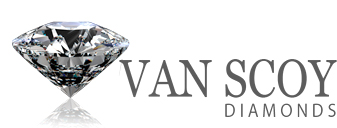Articles from Forbes and the Associated Press are lighting up the wires with the largest, flawless diamond having sold for $30.6 million at a Sotherby’s auction in Hong Kong. At 118-carats the anonymous buyer paid $259,322/carat. This just eclipsed the past record holder, another D color, flawless, 101-carat pear-shaped diamond sold in May 2013, for $26.7 million. How is that for perspective! Compared to the May diamond sold at the Christie’s auction in Geneva. However, not all diamonds for sale at the Hong Kong auction met their reserve, so a fancy, vivid blue, 7.59-carat diamond known as the ‘Premier Blue’ remains homeless after not meeting a minimum bid of $19 million. Sotherby’s is placing the ‘Pink Star’ to auction in Geneva this coming November which is a 59.60-carat pink diamond which is the largest, fancy pink with an internally flawless grading by the GIA, every made available. While the overall cost of the diamond market is down slightly, diamonds and precious gems offer an alternative investment opportunity that can be less volatile than other markets. Van Scoy doesn’t trade in gems of this size, but certainly can help you find a color, clarity, rating and cut that will fit your budget and your dreams. Here is a quick explanation of how diamonds are reviewed and rated, find more information by clicking the ‘Search Now’ button from our Loose Diamond Search option from the
Van Scoy home page.
Cut: After many trials stone cutters established the 58 facet cut to be the most efficient way to maximize the stone’s best qualities and this became known as the ideal cut. It remains the industry standard, and is the shape that most people recognize as being a diamond shape. Part of the job of a highly skilled cutter is to determine what shape will be the best one to create the largest possible polished diamond from a given piece of rough. So a pear- or emerald-shaped diamond has as much claim to being perfect as the ideal cut, particularly if it produced a larger stone.
Color:
- D-F: Absolutely colorless. This is the highest color grade and quite rare.
- G-J: Near to colorless. These may appear colorless when mounted in white gold or platinum.
- K-M: Diamonds in this category have a visible yellow or brownish tinge. These diamonds are not generally recommended for engagement rings and where large-sized stones are appropriate.
Clarity: Clarity is determined by the number, size, color, location, orientation and visibility of the inclusions and blemishes as seen under a 10X magnification. It’s perfectly fine to purchase a less than perfect stone, particularly as many of these imperfections are scarcely visible to the naked eye and often only when you are scrutinizing the diamond very closely.
- Flawless – No flaws internally or externally.
- Internally Flawless – No flaws internally. This category of diamonds is also very rare and valued highly.
- VVS1, VVS2 – Very, Very Slightly Included: Very difficult to see inclusions under 10x magnification. These diamonds are high quality.
- VS1, VS2 – Very Slightly Included: Inclusions are not visible to the naked eye. This category is less expensive than the VVS1 or VVS2 grades.
- SI1, SI2 – Slightly Included: Inclusions are visible under 10x magnification. This level of clarity is considered by many to be the best value buy because the inclusions are not visible to the naked eye. The prices for these diamonds are notably lower compared to those in clearer categories.
Carat Weight: The size of the diamond is called its carat weight and actually refers to its mass. All other characteristics being equal, the carat weight is the biggest determinant of the price of a stone. A one carat diamond ring will always cost more than a ring made of smaller diamonds that weighs the same or even more. Generally, once you have decided on which cut, color and clarity you want, the next important decision is to decide on the carat weight.
Click here for a chart on how different carat weight looks after it is set in a ring.


